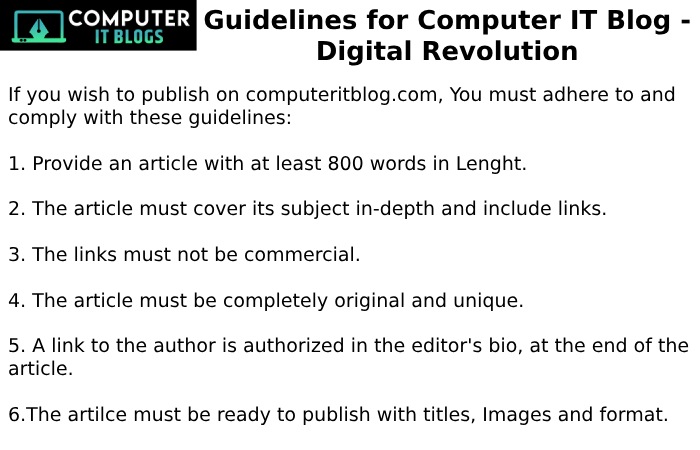Digital Revolution Write For Us

Digital Revolution Write For Us : The Information Age[a] is a historical period that began in the middle of the 20th century. It is characterized by a rapid transition from traditional industries created during the Industrial Revolution to an economy based on information technology. The beginning of the Information Age is associated with the growth of the transistor in 1947 and the optical amplifier in 1957. These technological advances have had a significant influence on the way information is processed and transmitted.
According to the United Nations Governance Network, the information age was shaped by exploiting advances in computer miniaturization. This led to the emergence of modernized information systems and Internet infrastructures as the driving force of social evolution.
There is an ongoing debate about whether the Third Industrial Revolution has ended and whether the Fourth Industrial Revolution has begun due to recent advances in artificial intelligence and biotechnology. This next transition was theoretically driven by the advent of the Age of Imagination, the Internet of Things, and rapid advances in machine learning.
Previous inventions of the Digital Revolution
Humans have made tools for counting and calculating since ancient times, such as abacus, astrolabes, equators, and mechanical devices for measuring time. More complex devices began to appear in the 1600s, including slide rules and mechanical calculators. By the early 1800s, the Industrial Revolution produced mass-produced calculators such as the adding machine and punched-card technology.
In the last quarter of the 19th century, the Second Industrial Revolution developed functional electrical circuits and the telegraph. In the 1880s, Herman Hollerith developed electromechanical tabulation and calculation devices using punched cards and unit recording equipment, which became widespread in business and government.
Meanwhile, analogue computer systems use electrical, mechanical, or hydraulic systems to simulate problems and calculate answers. These included the 1872 tide prediction machine, differential analyzers, perpetual calendar machines, Deltar for water management in the Netherlands, grid analyzers for electrical systems, and various machines for sighting military weapons and bombs. Building problem-oriented analogue computers constantly in the late 1940s and outside, with FERMIAC for neutron transport, Project Cyclone for various military applications, and Phillips Machine for economic modelling.
How to Submit Your Article
Once your article meets our procedures, you can submit it to contact@computeritblog.com
Article Requirements:
- “The title of the article and the document’s main text.”
- HQ image with a resolve of 1200 x 800 pixels.
- Article with 1 link to the main text and 1 author bio.
- Your social media channels
Write Reviews at Computer It Blog
We have reviewed the following products:
- Laptop, tablet, phone and camera
- HDTV, webcam, desktop, printer and monitor
- Apps for iPad, iPhone and Android
- Software, security and network
- Routers, servers, scanners and projectors
- Best technology, health and fitness, and digital devices
- Speakers, audio and e-readers
Ready to Share Your Tech Knowledge?
We’d love to hear from you! Please submit your article pitches or drafts and a short bio to contact@computeritblog.com
Let’s build a thriving community of tech experts together!
Search Related Terms
- write for us, technology USA
- write for us + software
- write for us + technology
- write for us + tech
- “write for us”+technology
- artificial intelligence writes for us
- write for us technology blog
- write for us +technology
- write to us about technology
- tech “write for us.”
- write for us + technology paid
- write for us software
- gadgets write for us
- write for us, tech
Guidelines of the Article – Digital Revolution Write for us

Thank you for your interest in contributing to the Computer IT Blog!
